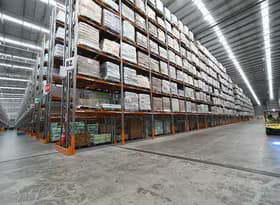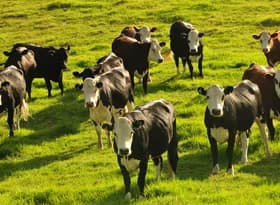Despite clear trade concerns globally, New Zealand’s primary sector is in a strong position, and high food commodity prices reinforce this strength. But Fonterra’s opening farmgate milk price forecast for the 2025/26 season provides a major signal of caution, highlighting the heightened volatility in global economic conditions, dairy supply dynamics, and trade tensions.
The message to farmers is clear: although high prices remain achievable, there is an outsized chance of a significant negative shock to prices, warranting prudent planning and financial caution.
An asymmetric milk price range
Rather than a balanced forecast, the starting farmgate milk price forecast for the 2025/26 season is unusually lopsided, sending a clear signal of possible risks. Fonterra has, since the 2018/19 season, started out with a wide range, before narrowing and adjusting that range throughout the season, as milk and milk products are contracted for sale, and as export prices change. Usually, the mid-point of the range is seen as the indicative milk price – for example, a $9.50-$10.50 range implies an expected milk price of $10/kgMS.
As our Chart of the Month shows, for the first time, Fonterra has published an asymmetric – or lopsided – milk price profile for the 2025/26 season. Fonterra’s forecast milk price remains at $10/kgMS, the same as for the season just ended, but it is not at the midpoint of the forecast range of $8-$11/kgMS. The clear signal here is that Fonterra judges there are low-probability risks around large downside risks to milk prices if more milk supply globally was to appear or if trade activity takes a knock from tariff instability.
Such an approach seems sensible given the instability and uncertainty in global trends in recent months. The message appears to be that the $10/kgMS milk price is a solid starting point, but that farmers need to be aware of the risks for significantly lower prices if global conditions deteriorate sharply.
Not only is the milk price range asymmetric, to show the balance of risks, but the price range is also large, at $3/kgMS between the $8 low and $11 high ranges. The starting milk price range for the previous five seasons had a range of $1.50 between the high and low points. Such a wide range further reinforces the wide variety of outcomes that could occur amid all the rapidly changing and uncertain conditions globally.
Careful approach means planning around the downside
This careful approach to the milk price for the season ahead is sensible in the face of such uncertainty. Although the Global Dairy Trade price index is still about 12% higher than a year ago and close to three-year highs, it has fallen at each of the last three auctions, and is down 3.3% from where it was at the start of May. The NZX Milk Price calculator also reinforces this caution, with current spot prices giving a snapshot price of $11.05/kgMS, but the seasonal calculator, which includes estimates for the rest of the season (being 11 of the 12 months!) suggesting a milk price of $10.15/kgMS.
In the face of global uncertainty, this asymmetric milk price forecast reflects a pragmatic and risk-aware approach. Farmers are right to be optimistic, but they will also remain grounded in the reality of market volatility. With a wide array of outcomes possible, this forecast acts as both a benchmark and a warning – prepare for change and ensure your business settings are resilient enough to weather what might come.










